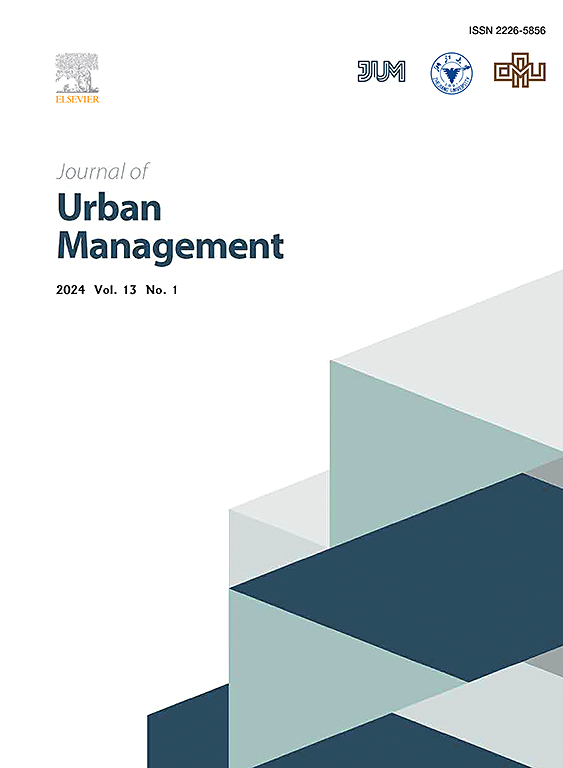Sustainable urban water management index for developing countries. A case study in Puebla City, Mexico
IF 5
2区 社会学
Q1 URBAN STUDIES
引用次数: 0
Abstract
Several indicator and index frameworks have been reported to assess management efficiency and promote transparency, facilitating decision-making and innovation. However, they cannot be applied in cities with limited information, making them impractical. This study proposes a Sustainable Urban Water Management Index (SUWMI) for such cities, selecting six AquaRating indicators plus two indexes recommended in the Sustainable Development Goal 6, yielding a simplified and practical version for diagnosing the management performance rate of the Water Operating Systems (WOS) in cities. Conceptual and mathematical models were defined for SUWMI, and the eight selected terms were hierarchized based on a decision tree with the participation of an expert panel and further multicriteria decision-making methodology by the Analytic Hierarchy Process (AHP) to calculate the weighting parameters. The selected indicators represent five categories on a percentage scale. The highly populated Puebla City Metropolitan Zone in Mexico was the case study. Information was gathered from five Water Operation Systems (WOS) from 2002 to 2020. The tap water area's coverage and physical efficiency improved despite the population growth due to an adequate political strategy after 2014. The SUWMI values of each WOS diagnoses its performance, highlighting their differences and providing a valuable tool for guiding urban water public policy programs. The paper proposes a simple, fast, and easy-to-calculate index that can be helpful for a broader cluster of cities and urban settlements with deficient available information, which is common in developing countries.

发展中国家可持续城市水管理指数。墨西哥普埃布拉市的案例研究
已报告若干指标和指数框架,以评估管理效率和促进透明度,促进决策和创新。然而,它们不能应用于信息有限的城市,这使它们变得不切实际。本研究针对此类城市提出了可持续城市水管理指数(SUWMI),选取6个水化指标加上可持续发展目标6中推荐的2个指标,得出一个简化实用的版本,用于诊断城市水操作系统(WOS)的管理绩效。在此基础上,定义了SUWMI的概念模型和数学模型,并在专家小组的参与下,基于决策树对所选的8个术语进行了分层,采用层次分析法(AHP)进一步采用多准则决策方法计算权重参数。所选指标按百分比表分为五类。墨西哥人口密集的普埃布拉市大都市区是一个研究案例。从2002年到2020年,从五个水操作系统(WOS)收集了信息。2014年后,由于适当的政治策略,尽管人口增长,自来水地区的覆盖范围和物理效率有所提高。每个WOS的SUWMI值诊断了其绩效,突出了它们之间的差异,并为指导城市水公共政策方案提供了有价值的工具。这篇论文提出了一个简单、快速、易于计算的指数,它可以帮助更广泛的城市群和缺乏可用信息的城市住区,这在发展中国家很常见。
本文章由计算机程序翻译,如有差异,请以英文原文为准。
求助全文
约1分钟内获得全文
求助全文
来源期刊

Journal of Urban Management
URBAN STUDIES-
CiteScore
9.50
自引率
4.90%
发文量
45
审稿时长
65 days
期刊介绍:
Journal of Urban Management (JUM) is the Official Journal of Zhejiang University and the Chinese Association of Urban Management, an international, peer-reviewed open access journal covering planning, administering, regulating, and governing urban complexity.
JUM has its two-fold aims set to integrate the studies across fields in urban planning and management, as well as to provide a more holistic perspective on problem solving.
1) Explore innovative management skills for taming thorny problems that arise with global urbanization
2) Provide a platform to deal with urban affairs whose solutions must be looked at from an interdisciplinary perspective.
 求助内容:
求助内容: 应助结果提醒方式:
应助结果提醒方式:


